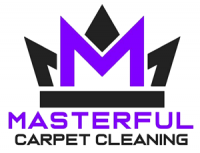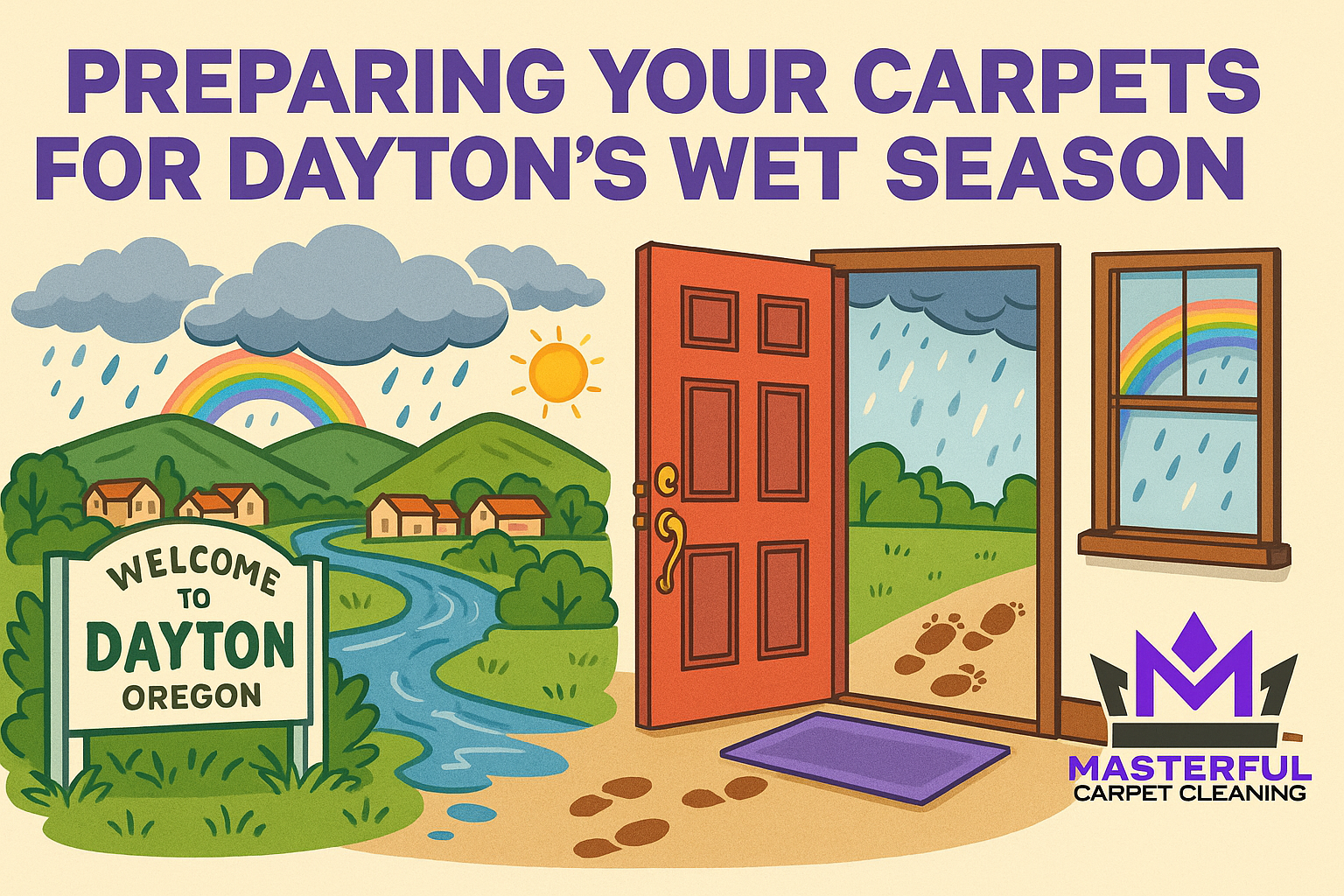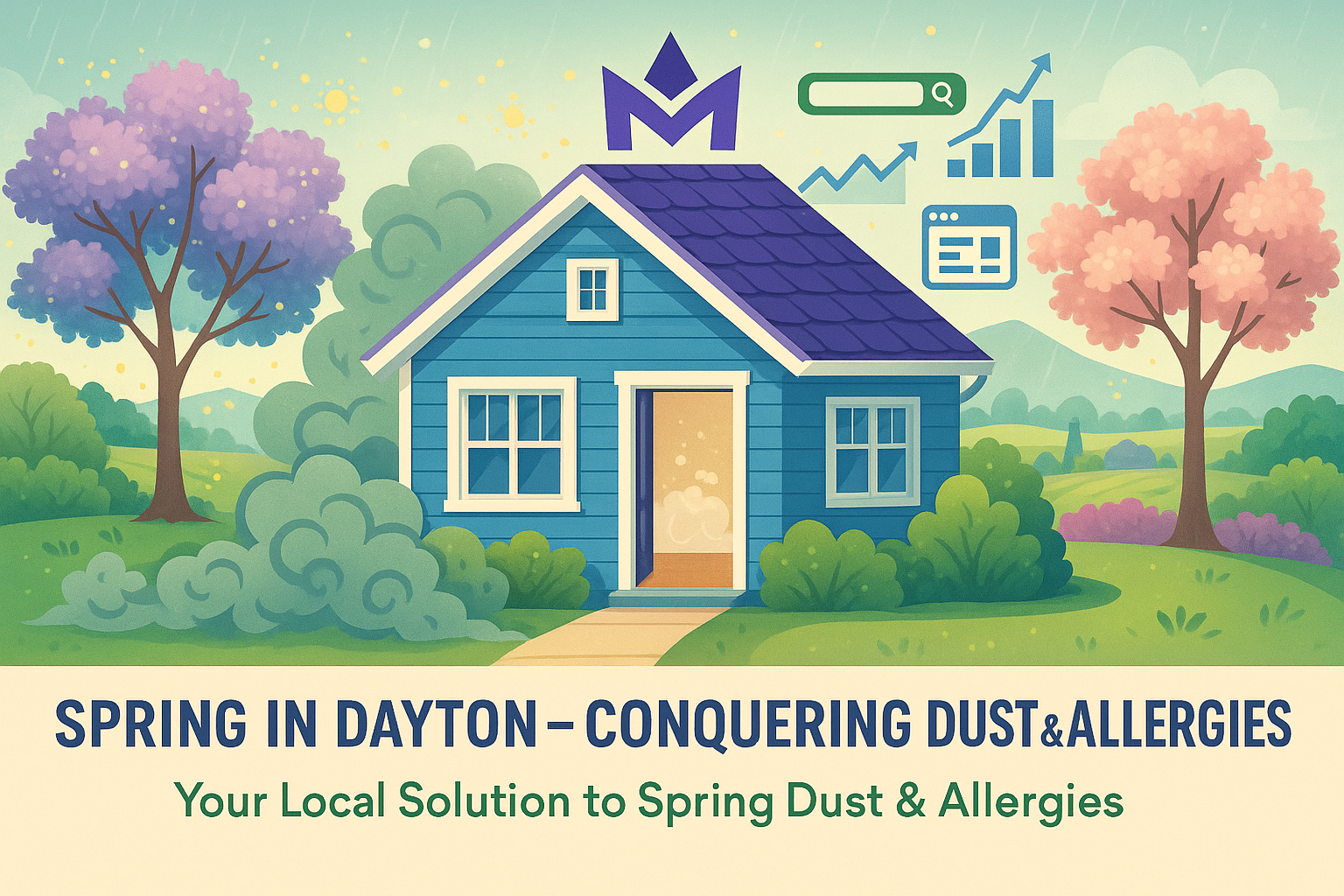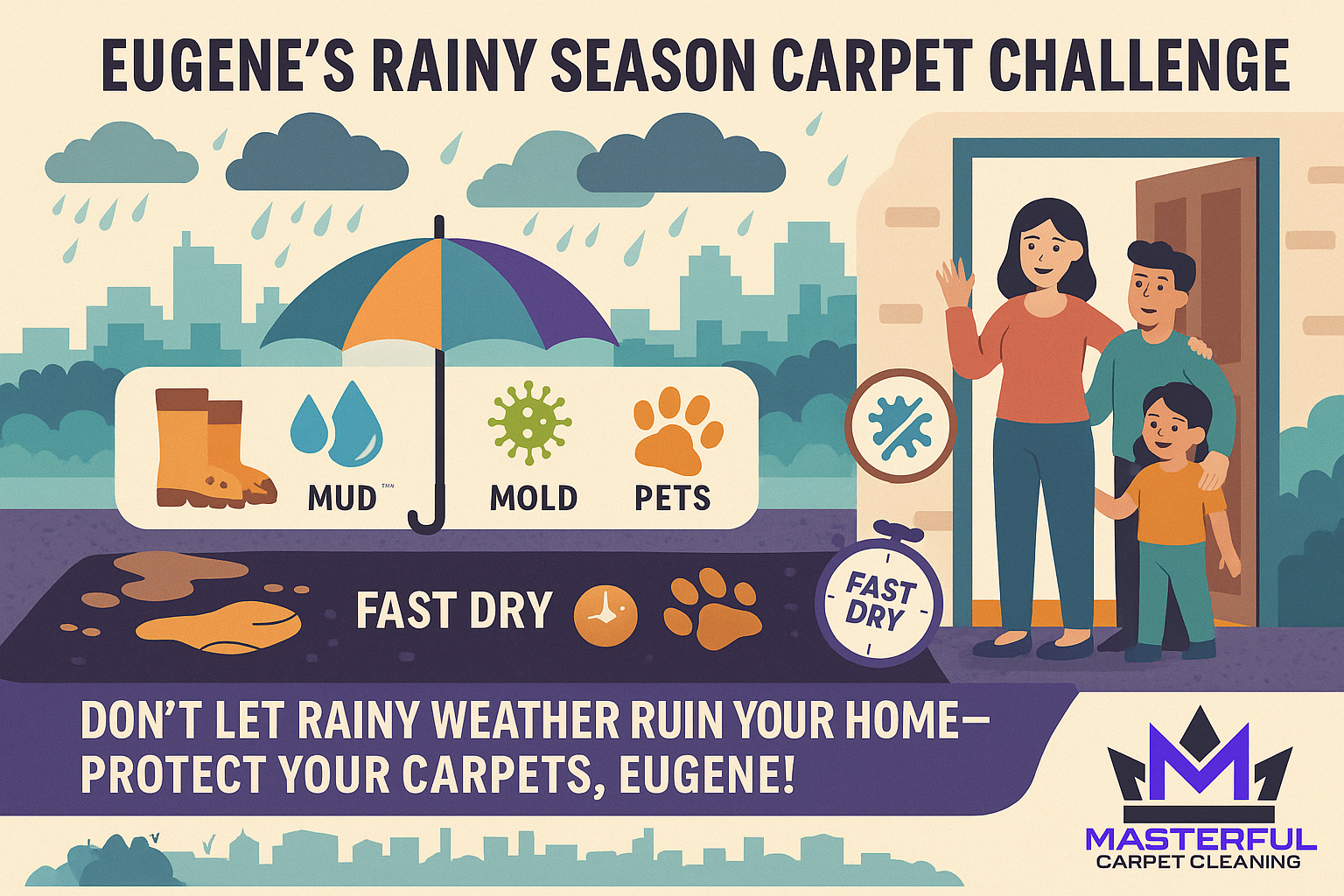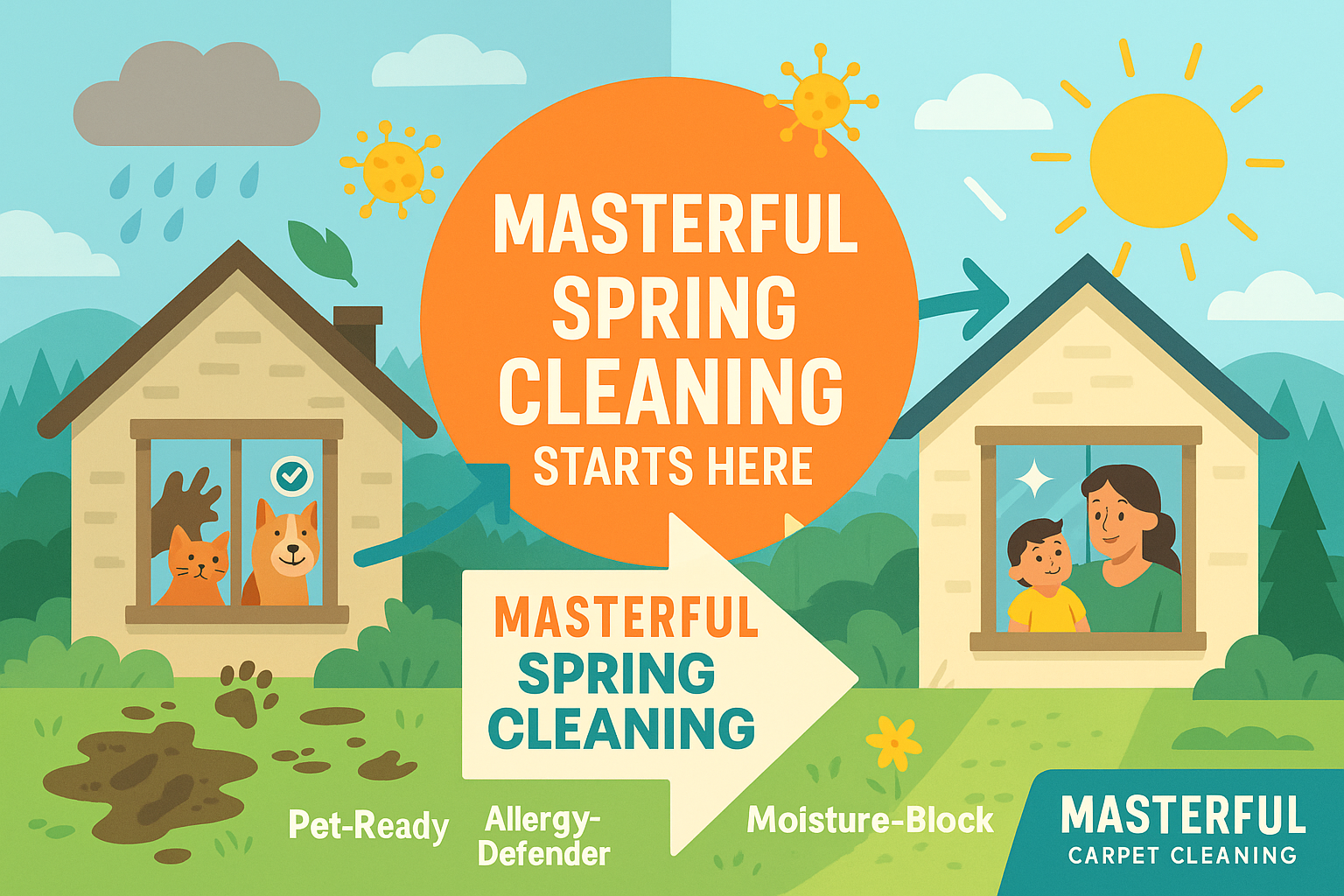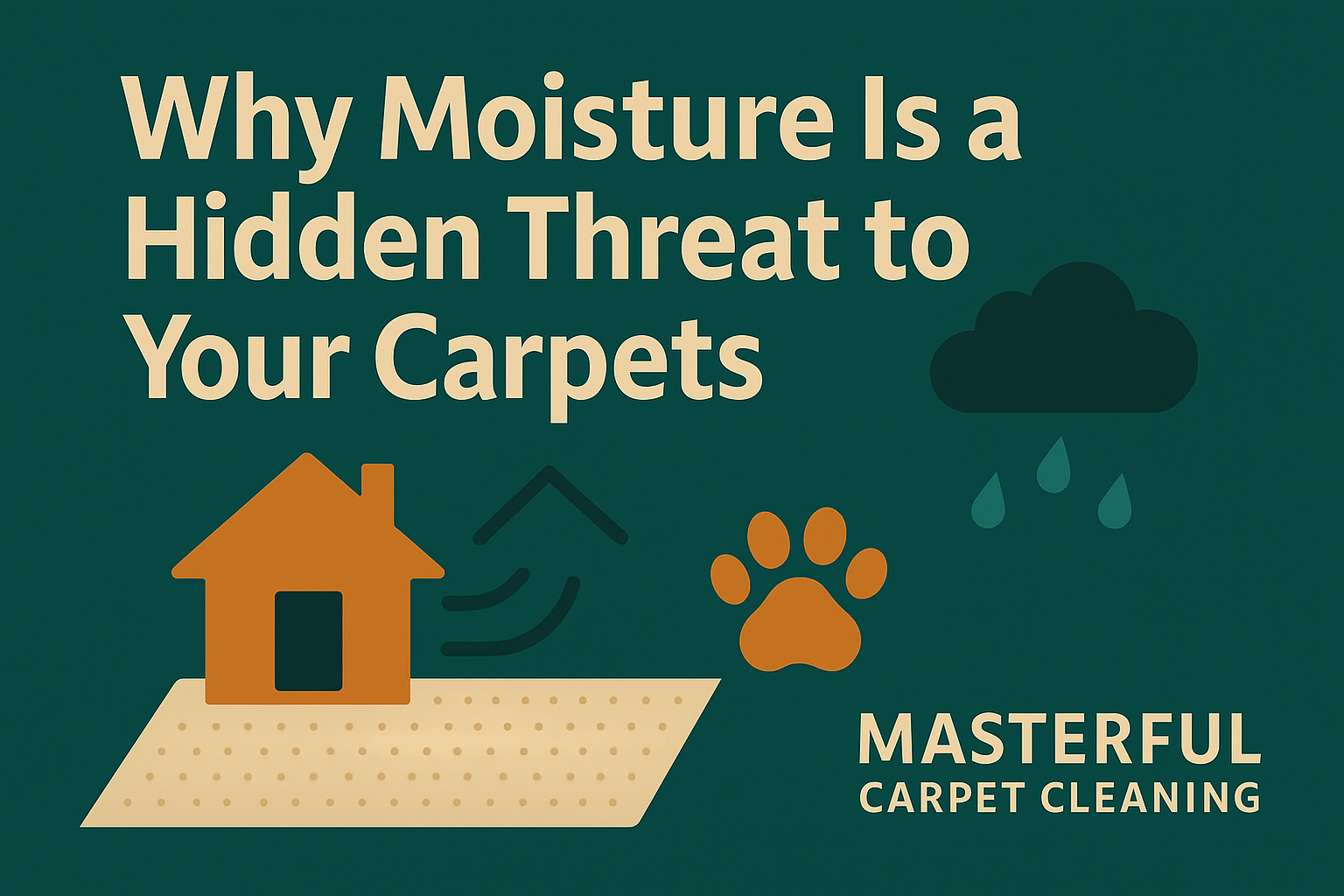The Causes of Carpet Tears and How to Prevent Them

Carpets play a key role in enhancing the beauty and comfort of living spaces. They are susceptible to wear and tear due to factors like daily foot traffic and furniture movement.
Understanding the difference between normal wear and tear and more severe carpet deterioration is important.
Carpet wear and tear typically involves dirt and debris getting embedded into the fibers, often leading to fraying and dullness over time.
Deterioration is more severe, featuring extensive damage like rips, tears, and unraveling material, often due to neglect or inadequate maintenance.
Identifying Causes of Carpet Damage
To adequately address the problem of carpet tears, it’s imperative to recognize their causes. The primary contributors include:
- High Traffic and Abrasion: Constant foot traffic and abrasive forces, such as dragging feet or furniture, push debris deeper into the carpet, damaging the fibers.
- Improper Cleaning: Neglecting regular cleaning can lead to dirt buildup, exacerbating wear and exacerbating the risk of tears.
- Aging and Exposure: Carpets naturally fade and deteriorate over time, with age and exposure to elements like sunlight hastening this process.
Preventative Measures for Carpet Longevity
To mitigate these risks and prolong the life of carpets, certain strategies are recommended:
- Selecting Durable Carpets: Opt for carpets with resilient fibers and high density, as these are more resistant to wear.
- Use of Entrance Mats: High-quality mats at entry points can significantly reduce the amount of dirt reaching the carpet.
- Regular Vacuuming: Frequent vacuuming, especially in high-traffic areas, is important for removing dirt and preventing fiber damage.
- Immediate Stain Removal: Promptly addressing spills and stains prevents them from setting and becoming permanent.
- Professional Cleaning: Periodic professional cleaning can remove deep-seated dirt and revitalize carpets.
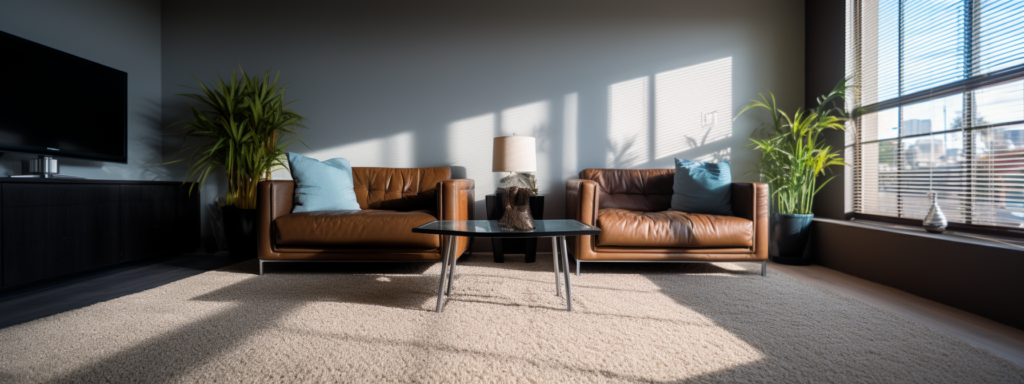
Factors Leading to Carpet Wear and Tear
Carpet wear and tear typically involve the accumulation of dirt and debris within the fibers, which may become frayed due to frequent use.
The more traffic a carpet endures, the more embedded these particles become, causing the fibers to fray and look dull. Carpets age naturally and can fade with exposure to sunlight, both of which are considered normal wear and tear.
Escalation to Carpet Deterioration
Carpet deterioration is a more severe form of damage, extending beyond simple wear and tear. It includes more frayed fibers, excessive dirt, tears, rips, unraveling material, and stains.
Neglecting to address wear and tear can escalate to this level of damage, making it permanent over time.
Specific Causes of Carpet Damage
- Dirt Accumulation: Dirt, along with mud and grime, is a significant contributor to carpet damage. It is a year-round issue, with constant foot traffic pushing these particles into the carpet fibers, leading to staining and discoloration.
- Spills and Stains: Beverages like red wine, coffee, and soda, as well as chemical spills, can permanently stain carpets if not addressed immediately. Such stains can sometimes lead to irreparable damage.
- Heavy Furniture: Weighty furniture can cause long-term damage, including permanent dents or holes in the carpet, especially when furniture is not moved for extended periods.
- High Foot Traffic: All types of shoes, particularly dress shoes and high heels, contribute to carpet wear. The more people and shoes a carpet is exposed to, the faster it wears down.
- Pet Activity: Common household pets like cats and dogs can cause significant wear and tear, leading to rips and holes due to their scratching habits.
Additional Factors Affecting Carpet Integrity
- Matting and Crushing: This results from the compression of carpet fibers due to consistent foot traffic, leaving a matted path or trail. While unavoidable, regular vacuuming can delay this process.
- Shedding and Pilling: Shedding occurs when carpet fibers tear or come loose from the base. Wool carpets are prone to shedding, while synthetic fibers are more resistant. Regular vacuuming can manage shedding but excessive vacuuming may exacerbate the problem.
- Depressions and Indentations: Caused by the weight of furniture compressing the fibers, these depressions can be treated with a damp rag or hot clothes iron.
- Carpet Buckling: This can be caused by moisture, poor installation, or dragging heavy furniture. Solutions include re-stretching the carpet and using a dehumidifier to manage moisture levels.
- Fading and Discoloration: Often a result of direct sunlight exposure, fading and discoloration can be mitigated by using blinds or curtains. Once the carpet is faded, options are limited.
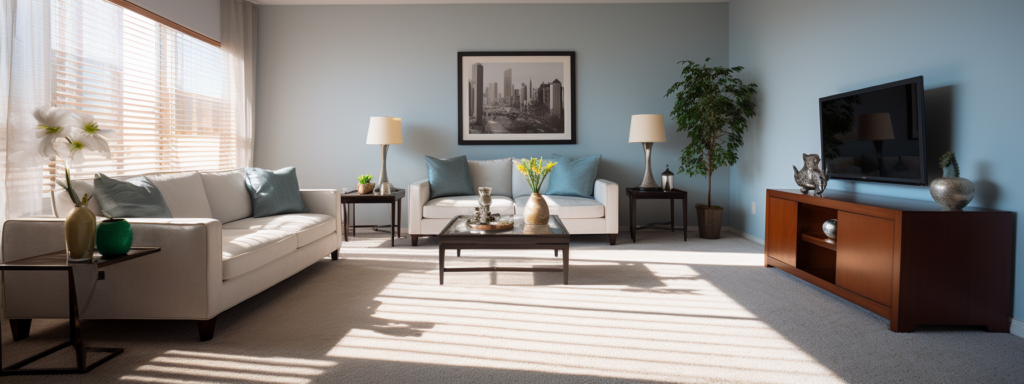
Strategies for Preventing Carpet Tears
Selection and Initial Setup
- Choose Durable Carpeting: Selecting a carpet with resilient fibers is fundamental in preventing wear and tear. Opt for synthetic fibers like nylon or polyester, which are resistant to crushing. Higher density carpets are less prone to matting and flattening, reducing the risk of tears.
- Apply Protective Coatings: Certain carpet manufacturers offer coating products designed to enhance the carpet’s resistance to wear and tear. These coatings, which need to be periodically reapplied, can significantly extend the life of the carpet.
Routine Maintenance and Care
- Regular Vacuuming: Vacuuming is essential to prevent the accumulation of dirt that can damage carpet fibers. Use a vacuum with appropriate settings to avoid harming the fibers, focusing especially on high-traffic areas.
- Prompt Stain Removal: Address spills and stains immediately to prevent them from becoming permanent. Blot gently and use suitable carpet cleaning solutions or professional services for stubborn stains.
- Professional Cleaning: Engage in regular professional carpet cleaning to remove deep-seated dirt and allergens. This practice not only cleans but revitalizes carpets, contributing to their longevity.
- Monitor Humidity Levels: High or low humidity can adversely affect carpet fibers, leading to damage. Use humidifiers or dehumidifiers to maintain optimal levels, preventing issues like brittleness or mold growth.
- Frequent Deep Cleaning: Beyond regular vacuuming, incorporate deep cleaning sessions targeting the carpet fibers, especially after spills or in high-use areas. This will help maintain the carpet’s appearance and integrity.
Physical Measures and Environmental Controls
- Use Entrance Mats: High-quality mats at all entry points trap dirt and moisture, serving as a first line of defense against carpet wear.
- Rearrange Furniture Periodically: Changing the layout of furniture helps distribute weight and foot traffic evenly across the carpet, preventing localized wear.
- Furniture Pads and Coasters: Attaching pads to furniture legs reduces friction and prevents fiber damage. Regularly check and replace these pads for sustained effectiveness.
- Utilize Rugs in High Traffic Areas: Place durable rugs in areas with high foot traffic to protect underlying carpets. Rugs are easier to clean and can be replaced more readily than wall-to-wall carpeting.
- Avoid Dragging Heavy Items: When moving heavy furniture or objects, avoid dragging them across the carpet. Instead, use protective coverings like canvas tarps or drop cloths.
- Maintain Air Quality: Regularly change air conditioner and furnace filters to prevent airborne debris from settling into the carpet fibers.
Managing External Factors
- Train Pets Properly: Pets can be a significant source of carpet wear. Train them to avoid certain areas or to be gentle on the carpet. Supervision is key to preventing damage from scratching or accidents.
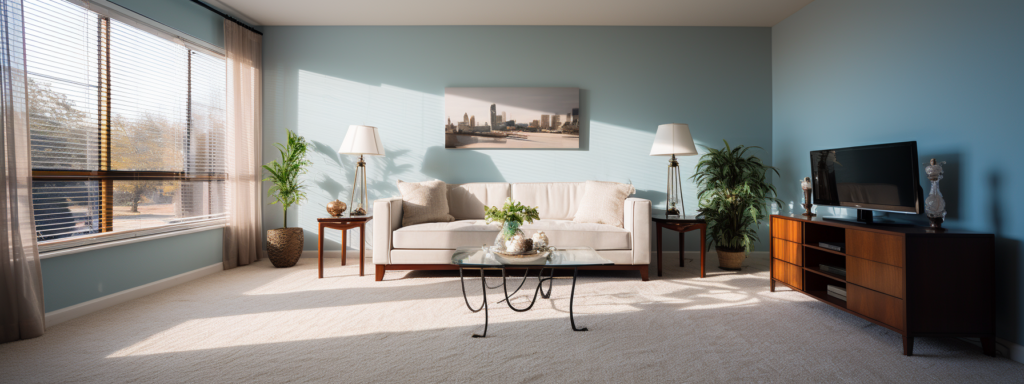
Best Practices in Carpet Maintenance
Fundamental Practices
- Shoes Off Policy: Implement a ‘no shoes’ policy indoors to prevent dirt, grime, and allergens from being tracked onto the carpet. This simple measure goes a long way in preserving the carpet’s appearance and reducing health risks.
- Protect High Traffic Areas: Use area rugs, runners, and mats in hallways, stairs, and other high-traffic areas to prevent wear and tear. These protective coverings safeguard against staining and gradual wear.
- Immediate Spill Response: Address spills quickly using appropriate spot-cleaning techniques. For instance, use hydrogen peroxide for red wine stains, a mixture of water and detergent for food stains, and enzyme removers for pet urine. Timely cleaning prevents stains from becoming permanent.
- Sunlight Exposure Management: Reduce the exposure of carpets to direct sunlight. UV rays can cause fading over time. Use blinds or shades to protect the carpet, especially during peak sunlight hours.
Regular Cleaning and Care
- Routine Vacuuming: Regular vacuuming is important to remove soil, dust, and embedded debris. Vacuum high-traffic areas daily or every other day, and low-traffic areas at least twice a week. Use appropriate vacuum settings for different carpet types to avoid damage.
- Furniture Management: Periodically rearrange heavy furniture to prevent crushing the carpet pile. Utilize carpet protectors under furniture legs to distribute weight and avoid permanent indentations. When moving heavy furniture, create a barrier, such as plywood or cardboard, to prevent carpet damage.
- Professional Cleaning: Schedule professional carpet cleaning periodically. Professionals use methods like hot water extraction to deeply clean carpets, extending their appearance and lifespan. Regular maintenance can reduce the frequency of these deep cleans, saving money in the long run.
- Use of Carpet Protector Sprays: For non-stain-resistant carpets, apply carpet protector sprays to repel liquids and stains. Follow application instructions carefully and reapply as needed.
- Handling Snags and Sprouts: If you notice snags or sprouts in your carpet, clip them carefully with scissors instead of pulling, them to prevent further damage.
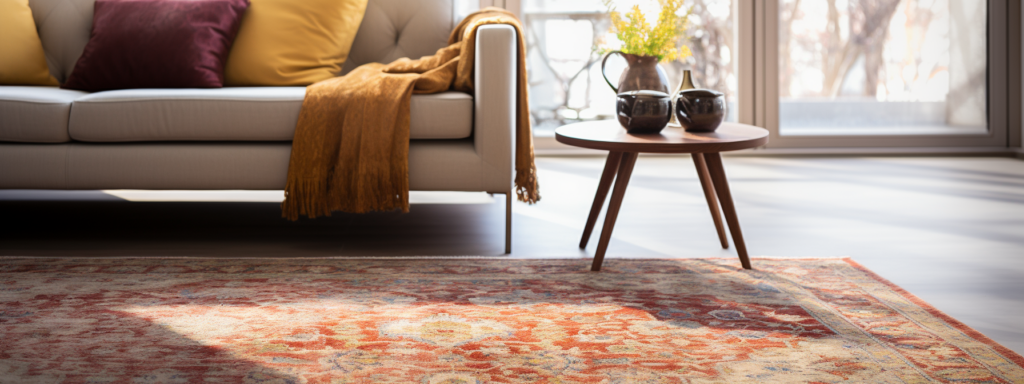
Ensuring Longevity and Aesthetics of Carpets
Understanding and addressing the causes of carpet tears are integral to maintaining the longevity and aesthetic appeal of carpets in homes and businesses.
From selecting durable materials and employing protective strategies to adopting routine maintenance practices and professional cleaning services, these measures collectively contribute to preserving the quality of carpets.
It is paramount that homeowners and property managers recognize the importance of proactive care and timely interventions. By implementing these best practices, the life of carpets can be significantly extended, ensuring they remain a valuable and attractive component of any interior space.
Emphasizing Key Takeaways
- Proactive Prevention: The strategies outlined highlight the importance of proactive measures, from immediate spill clean-up to regular vacuuming and professional cleaning.
- Adaptation to Specific Needs: Tailoring care practices to specific carpet types and environmental conditions is key for optimal maintenance.
- Value of Regular Attention: Regular attention to carpet care, including managing foot traffic and sunlight exposure, plays a critical role in preventing premature wear and tear.
By embracing these insights and recommendations, individuals can significantly enhance the durability and appearance of their carpets, ensuring they remain a cherished and functional aspect of their living or working environments.
Author
-

As the Co-Owner of Masterful, Randy has been providing quality cleaning services to the Salem and Portland areas of Oregon for many years. He has built a reputation for excellence in the industry. His team take prides in using the latest cleaning techniques and technologies to deliver exceptional results every time.
View all posts
